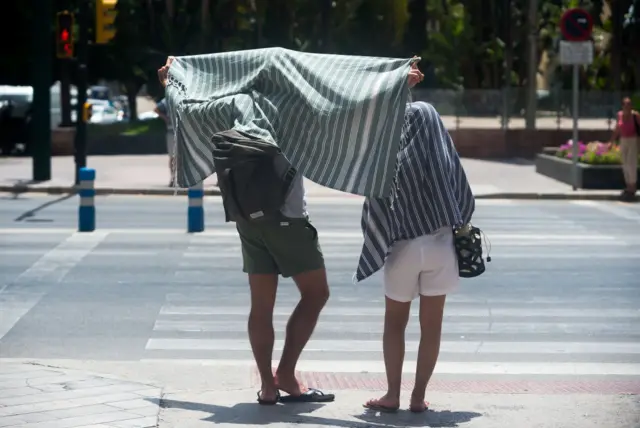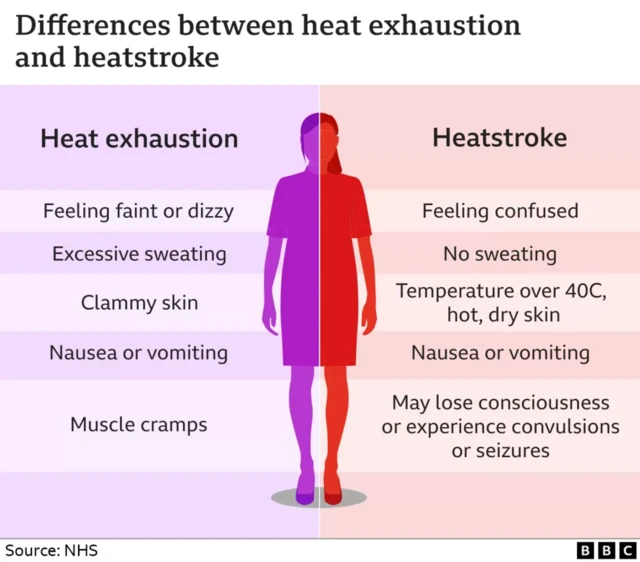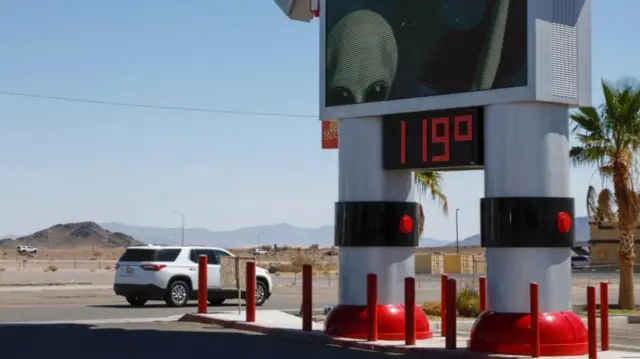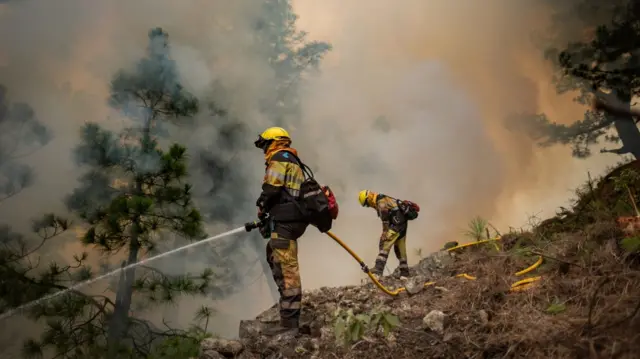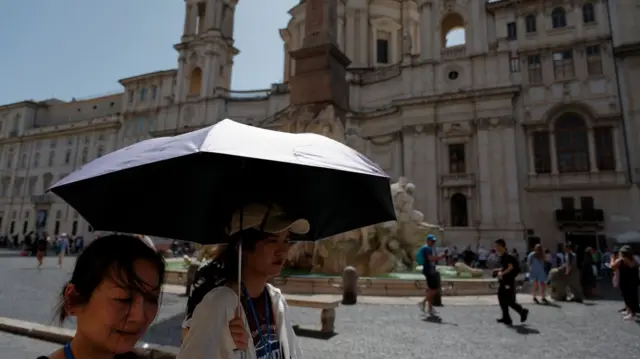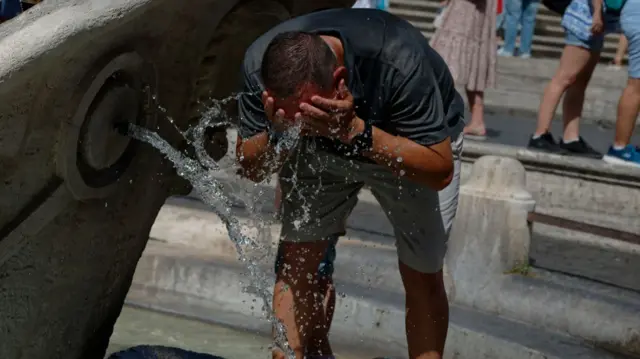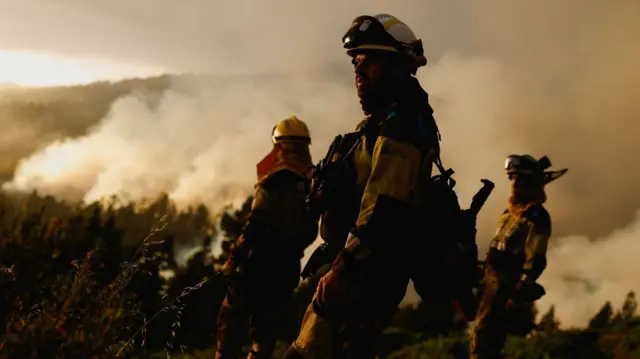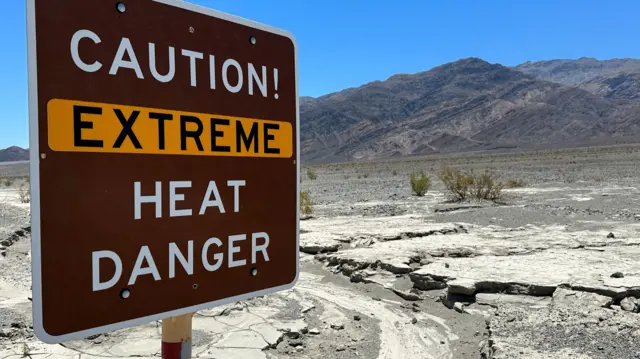US also grapples with floods and wildfire smokepublished at 14:29 BST 17 July 2023
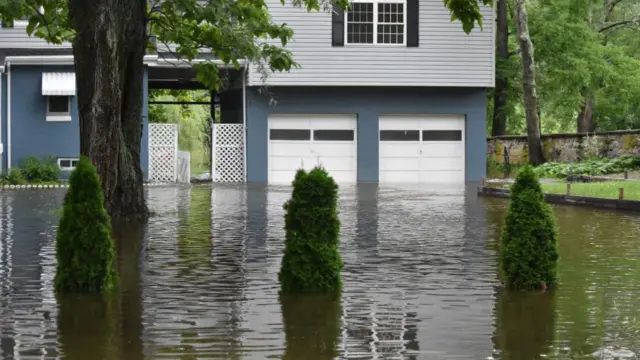 Image source, Getty Images
Image source, Getty ImagesA flooded driveway captured in New Jersey on Sunday
Millions of Americans are under heat advisories as of Monday, but the excessively hot weather is not the only thing authorities in the US are worried about.
The National Weather Service is also forecasting other bouts of "unsettled weather" early this week, including excessive rainfall that may trigger flash flooding in parts of southern Louisiana and Arizona, the Ohio Valley and the northern mid-Atlantic states.
The US had already seen excessive flooding over the weekend, which killed five people on Saturday in eastern Pennsylvania. Two children - a baby and his two-year-old sister - remain missing.
Along with the heavy rain, forecasters also note that Canadian wildfire smoke has returned to the north-eastern US, triggering smoke advisories in cities like Cleveland, Ohio and Chicago, Illinois.
"This is possibly our new normal," New York governor Kathy Hochul warned at a press conference on Sunday.






